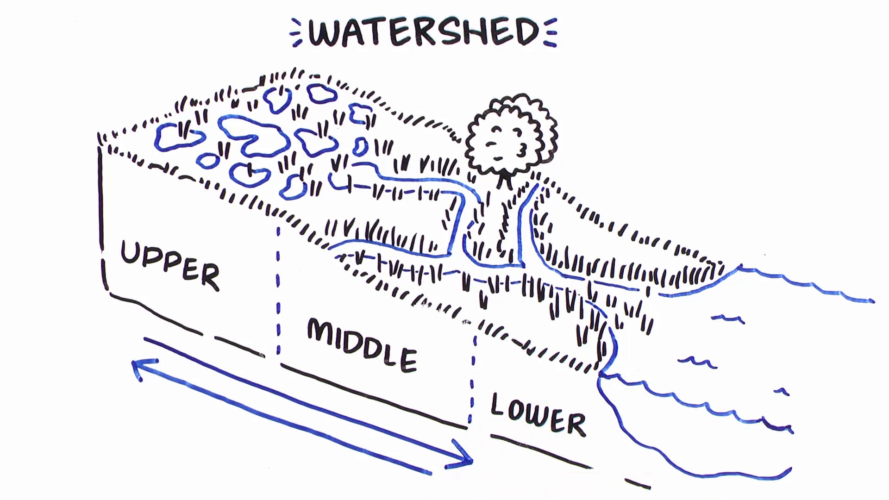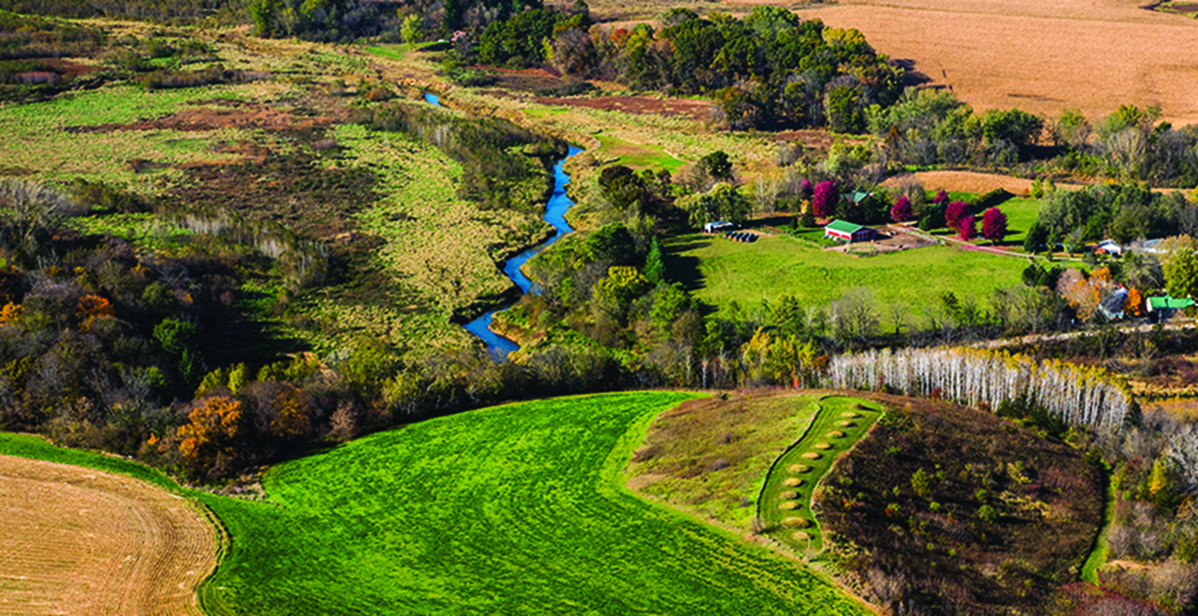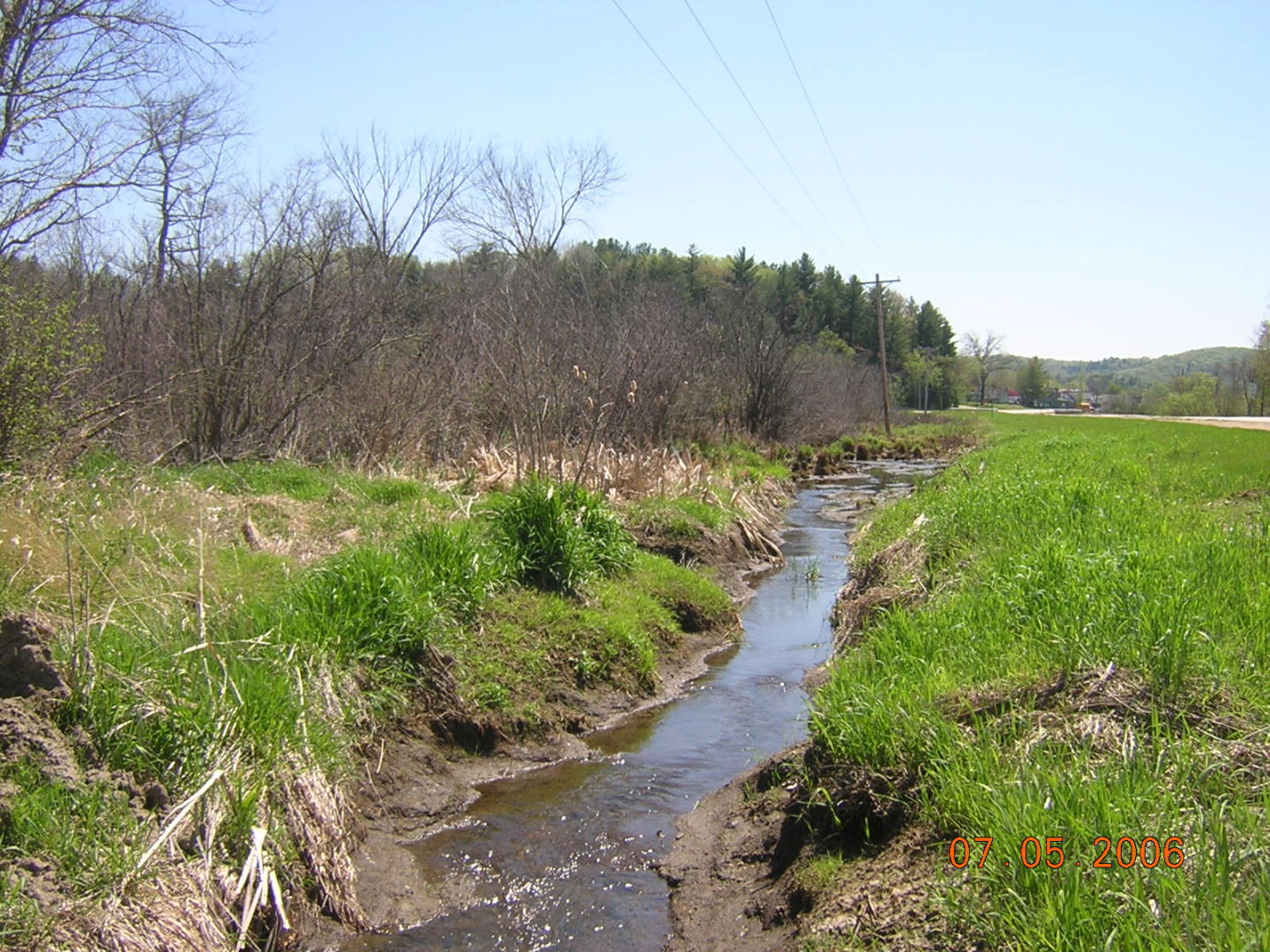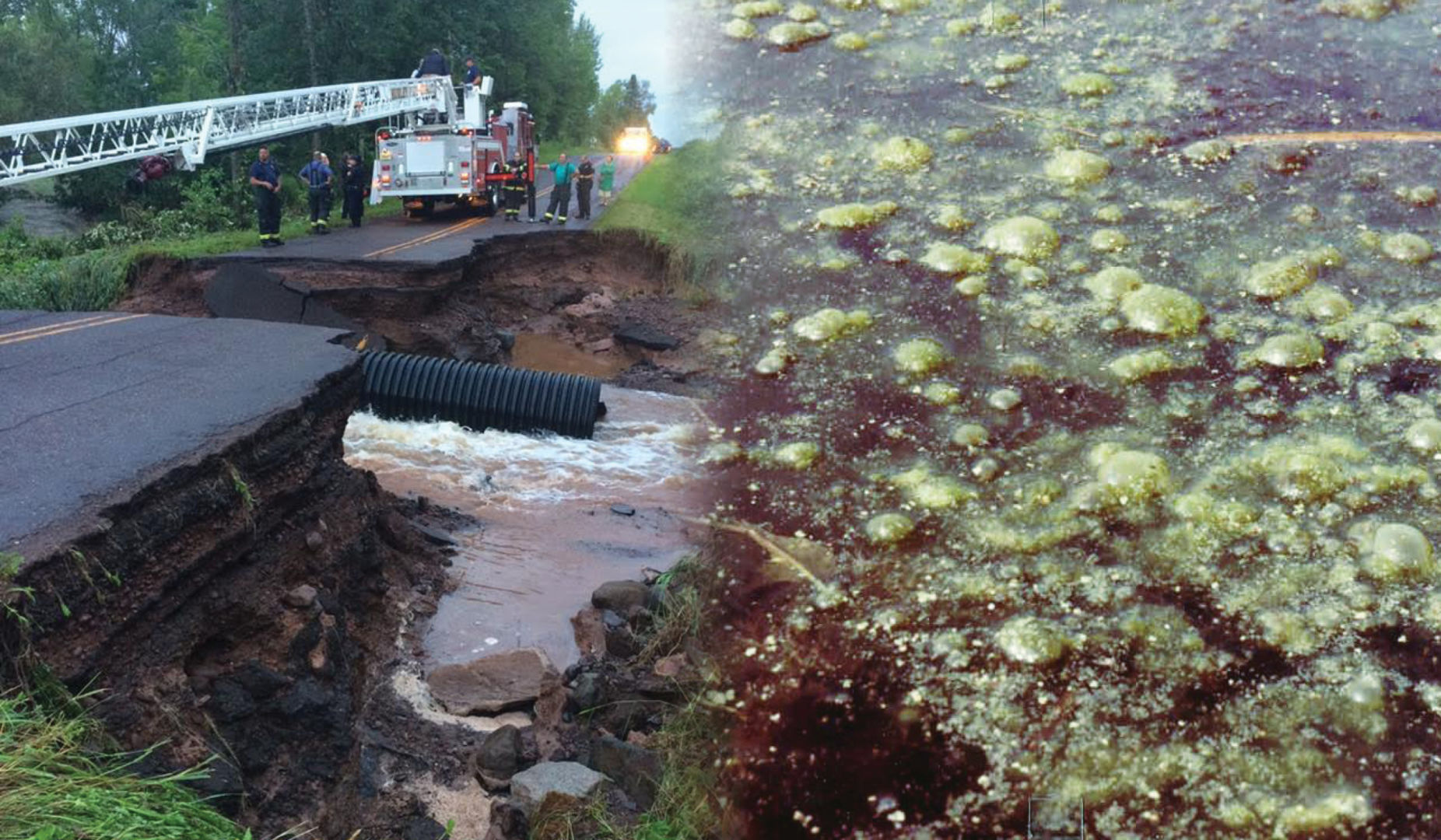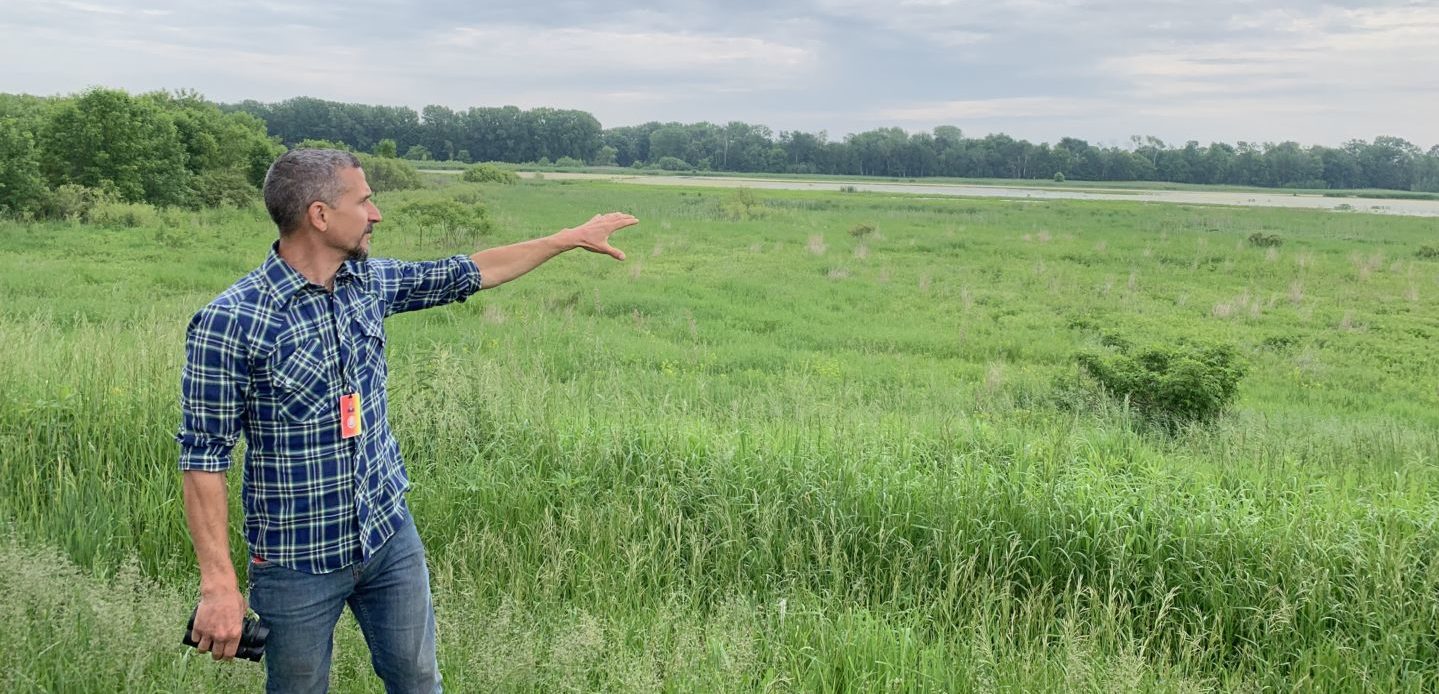This is the first in a series of four blog posts on hydrologic restoration in Wisconsin. Read part 2, “Changes to our land, challenges for our waters,” part 3, “Our legacy of wetland loss: Behind our water problems,” and part 4, “Fixing our waters: Community-led watershed-based hydrologic restoration in Wisconsin”.
Do you remember fishing with your grandpa? Catching frogs at the water’s edge? Some of these precious childhood memories of nature tie back to wetlands.
Wetlands occur between the places that are always wet and the places that are always dry. Not only do they give us great memories, but they also protect the health and safety of our communities. They reduce flood damages, help keep our waters clean, and ensure we have water to drink and use in our businesses.
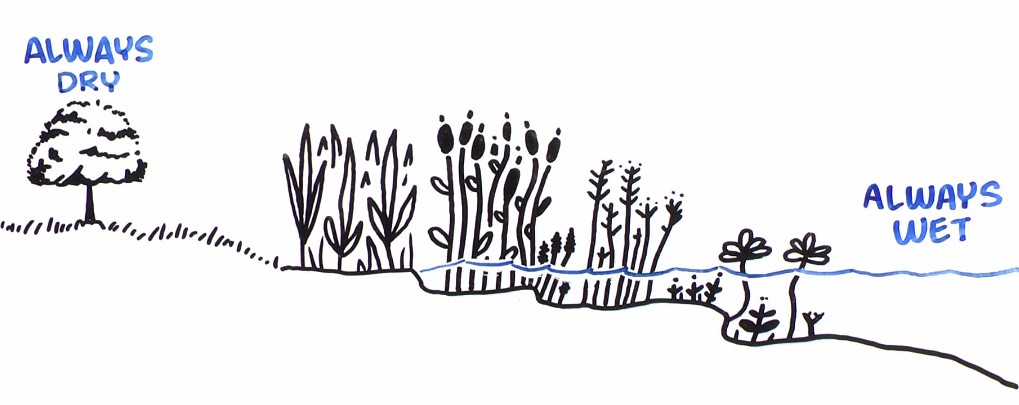
But the ability of wetlands to provide these benefits depends on how we use and manage our land and water. Across much of the state, the changes we have made to our landscape have disrupted this ability. And as a result, we’re seeing more flood damages and water quality problems.
The good news is that wetlands can be an important part of the solutions to these problems. And by understanding how wetlands work, we can begin the exciting process of restoring wetlands to help heal Wisconsin’s waters.
Because water flows downhill, we can’t fix issues downstream if we don’t fix problems upstream. So let’s start at the top and look at how it’s all connected…the watershed.
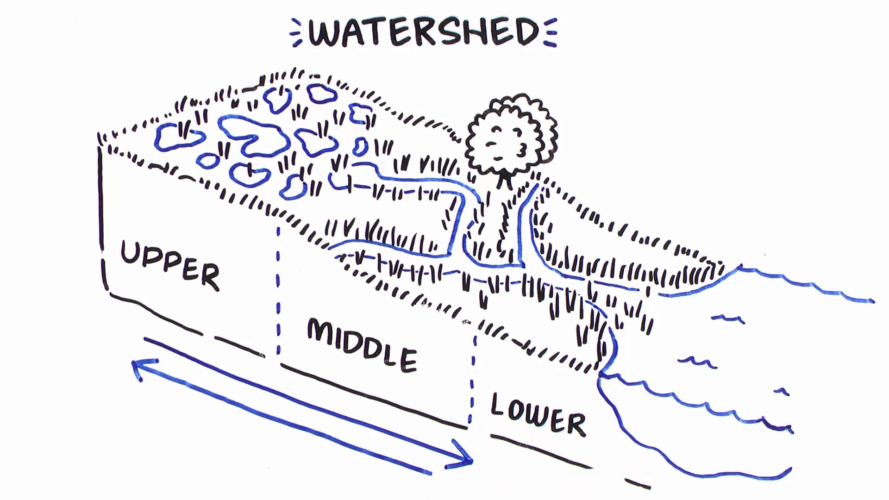
A watershed is an area where all surface waters—lakes, rivers, streams, and wetlands—drain to a shared body of water. But wetlands in different parts of a watershed manage water in different ways.
Wetlands in the upper parts of a watershed form in low spots on the land. These wetlands capture, store, and slowly release runoff from rain and snowmelt. They may not always look like wetlands—they’re wet in the spring and dry by late summer—and often they don’t even appear to be connected to streams or rivers, but they are critical.
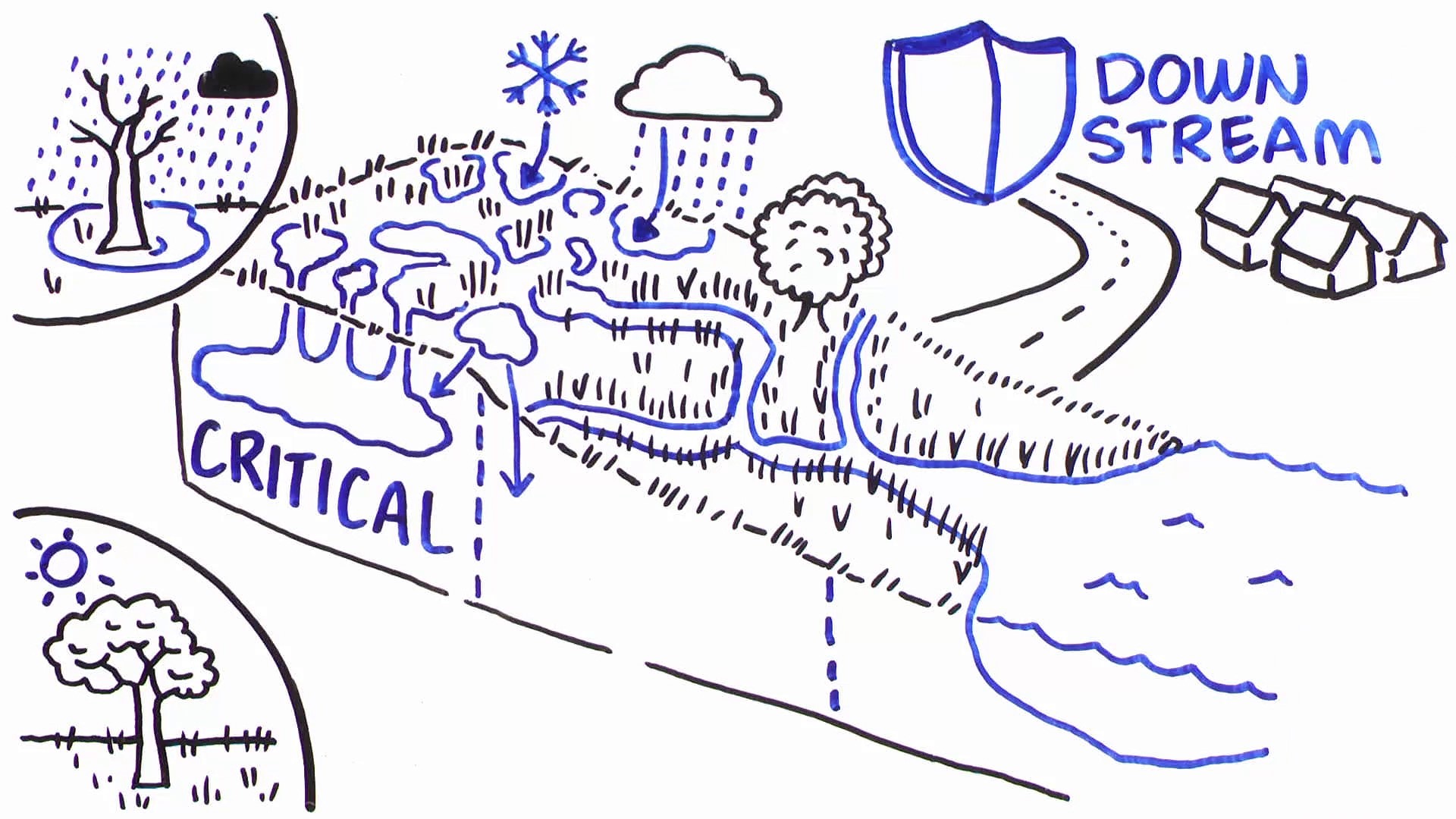
Here’s how: individually, these wetlands may be small, but they can be locally abundant. Together, they hold and manage a lot of water and literally slow the flow, allowing the water to soak into the ground. This reduces erosion and flood peaks and helps protect downstream roads and neighborhoods.
Wetlands in the middle part of a watershed form along rivers and creeks, giving them room to swell during high water. They are most commonly known as floodplain wetlands.
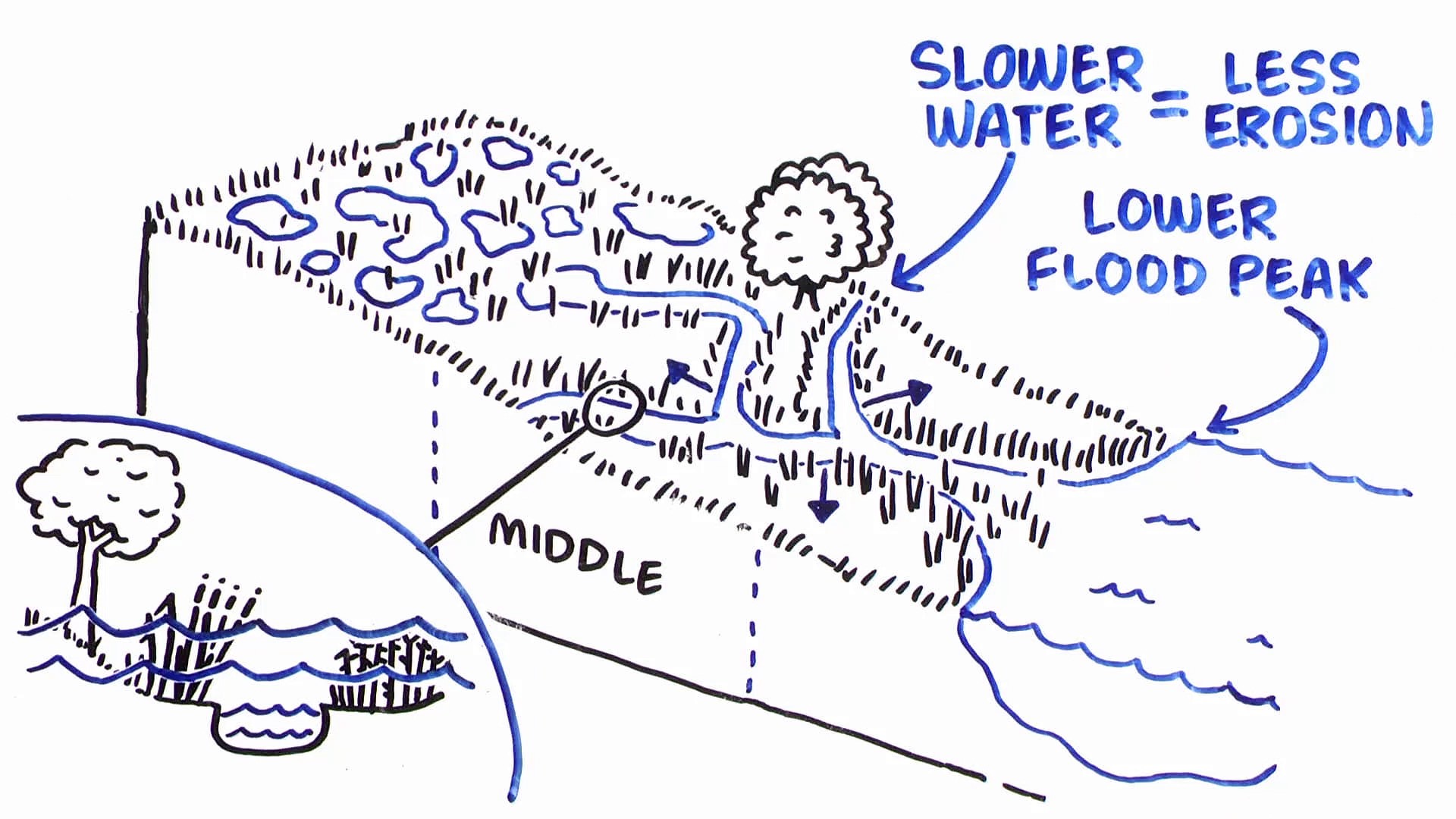
When floodwaters spread out across a floodplain they slow down and spread out. Slower-moving water has less erosion-causing energy. And water that can spread out means lower flood peaks downstream.
Wetlands in the lower parts of a watershed form where rivers empty into larger bodies of water, especially lakes. Where rivers flatten out, the current disperses and the river drops its load of sediments and other material. This makes the water that enters the lake cleaner and clearer, which means better fishing, swimming, and boating.
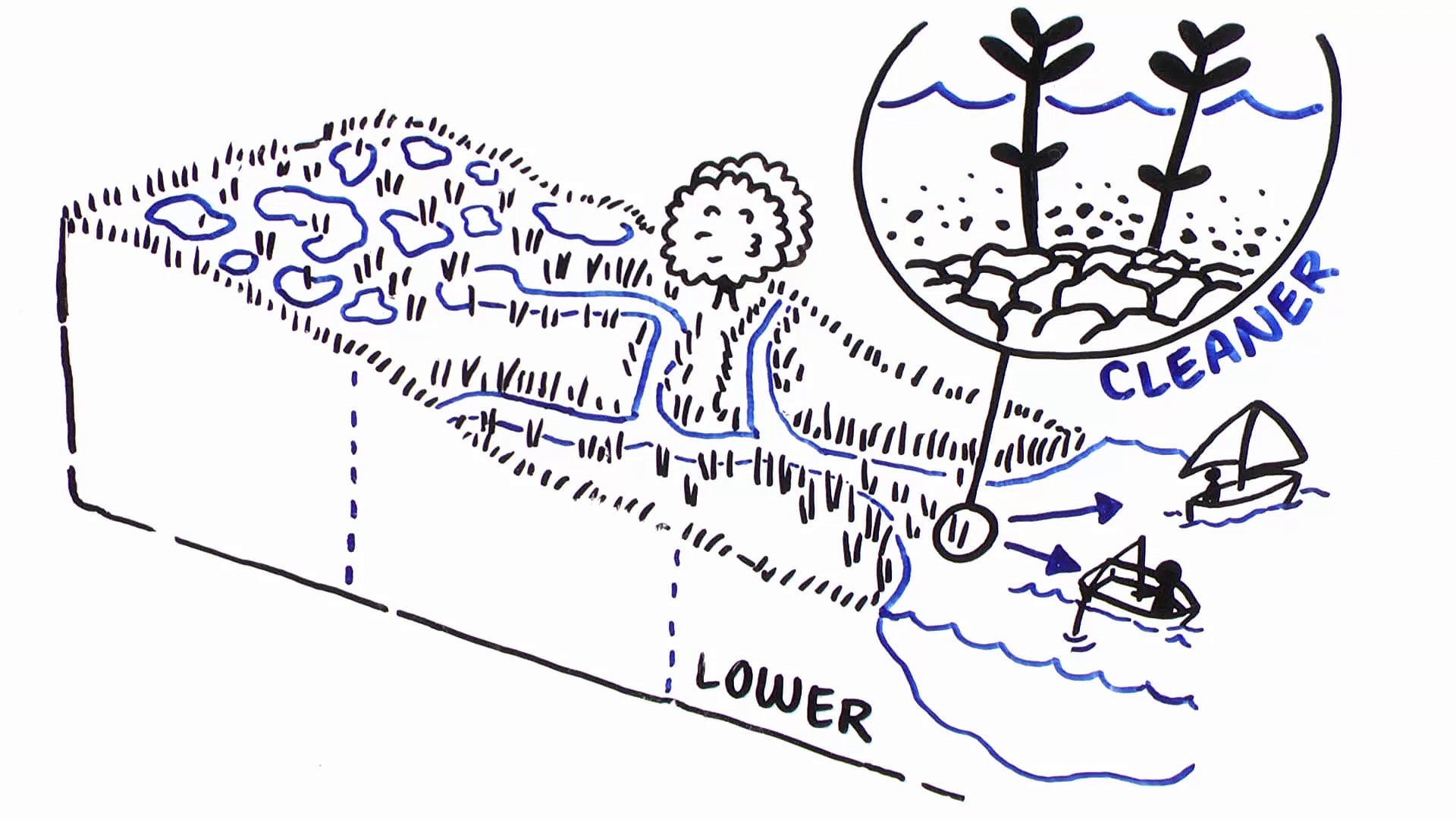
So, are the wetlands near you healthy and abundant enough to support watershed health, or are they too damaged to do the work you need them to do?
If you don’t know the answer, you’re not alone! But if you’re concerned about water quality and flooding and care about fish and wildlife, encouraging your community to explore how local wetlands are—or are not—supporting watershed health is a great place to start.
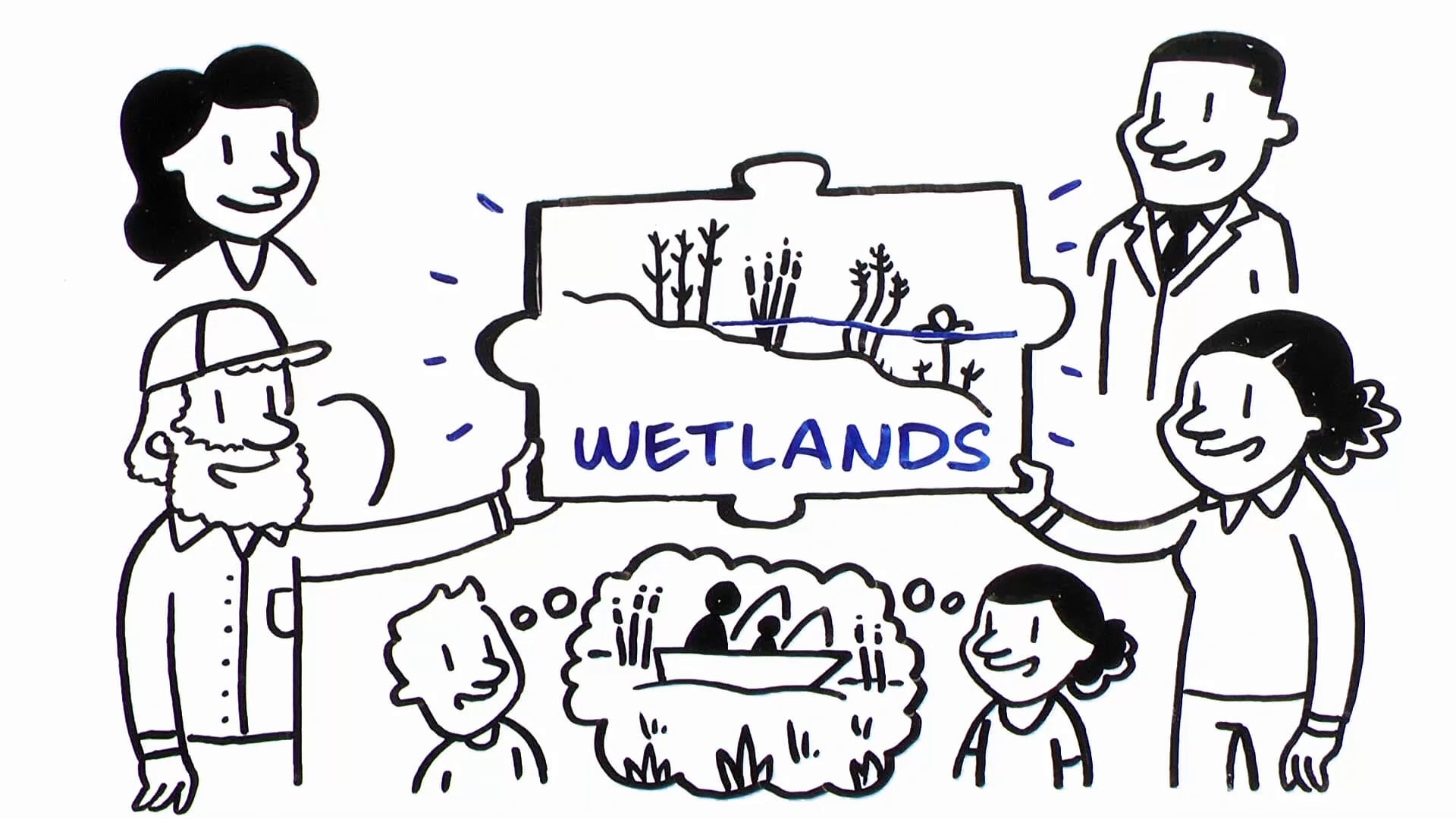
Working together, we can use wetlands as solutions in our communities. And at the same time, we can ensure that our kids and grandkids create the same treasured childhood memories we hold dear.
View a dynamic video version of this article at wisconsinwetlands.org/videos/howwetlandsmanagewater.
Interested in sharing this article in your newsletter or blog? Contact us at programs@wisconsinwetlands.org.
Special thanks to our project funders:
- The Brookby Foundation
- We Energies Foundation
- Wisconsin Coastal Management Program
- National Oceanic and Atmospheric Administration
- The Robert W. and Susan T. Brown Family Foundation
- Wisconsin Potato & Vegetable Growers Association
- Paul E. Stry Foundation
- Wisconsin Wetlands Association Members
Related content
Developing a shared understanding of watershed-based hydrologic restoration
Watershed-based hydrologic restoration is one of the most effective and important ways to address water management concerns, but it isn’t a widespread practice yet.
Changes to our land, challenges for our waters
Our legacy of wetland loss: Behind our water problems
When we remove or damage wetlands, the loss of those wetland services contributes to many of the state’s most dangerous and expensive water management problems.
Fixing the water: Community-led watershed-based hydrologic restoration in Wisconsin
We’ve seen how human actions have disrupted hydrology and brought widespread societal and ecological challenges. Now, let’s look at how we can reverse (and are reversing) the damage.

